8 /10 1 Votes
4.5/5 My Abandonware Initial release date 15 March 1994 | 3.6/5 GOG Series Ultima | |||||||||||||||||||||||||||||||||
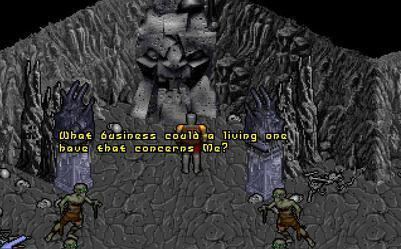 | ||||||||||||||||||||||||||||||||||
Programmer(s) Tony Zurovec (lead)Rob Corell, Jason Ely, Mike McShaffry, Herman Miller, Zachary Booth Simpson, Jeff Wilson Artist(s) Bob Cook, Beverly Garland, Denis R. Loubet, Dicko Mather, Brent Poer, Steve Powers, Jonathan Price, Micael Priest, Matt Sheffield Composer(s) Nenad Vugrinec, Randy Buck, John Tipton, Kirk Winterrowd Publishers Electronic Arts, Origin Systems Similar Ultima games, Origin Systems games, Role-playing video games | ||||||||||||||||||||||||||||||||||
Ultima viii pagan pc dos 1994 origin systems
Ultima VIII: Pagan is a video game, the eighth part of the role-playing video game series Ultima. It was not as well-received as its predecessors, Ultima VII and Ultima VII Part Two: Serpent Isle. Developed in 1994, it is a DOS-only title and is also the first game in the series to be rated M in North America.
Contents
- Ultima viii pagan pc dos 1994 origin systems
- Ultima viii pagan 01 burglary
- Plot
- Original Plot
- Development
- Release
- Speech Pack
- The Lost Vale
- Support and legacy
- Re release
- Reception
- References
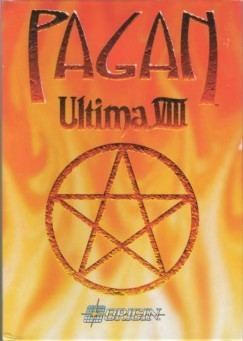
Ultima viii pagan 01 burglary
Plot
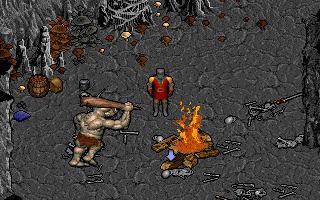
Following the defeat of the charismatic religious leader Batlin on Serpent Isle, the Guardian banishes the Avatar to a world that he has already conquered: Pagan. Ultima VIII has a much darker tone and a very different premise, in comparison to most of the Ultima games. The world of Pagan is entirely different from that of Britannia: the Virtues were not part of Pagan's culture, and the magic systems and monsters were entirely different.
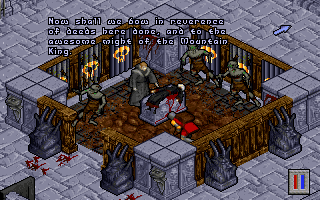
The world of Pagan is in eternal twilight as the result of an ancient battle between the Elemental Titans and the evil "Destroyer", which resulted in the victory of the Titans. However, the people of Pagan had to pay a high price: the Titans had to henceforth be worshiped as gods. The Titans bestow powers on their most ardent followers, but they are otherwise cruel and unloving rulers, and their followers terrorize the general population.
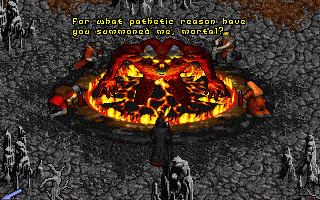
Ultima VIII sets off where Ultima VII Part Two: Serpent Isle ended: The Guardian has grasped the Avatar from the Void, and now drops him into the sea of the world Pagan through a pentagram-shaped portal. In the introduction, the Guardian reveals his plot: "You have been a thorn in my side for far too long, Avatar. Your two worlds will be crushed. Britannia first, then Earth. I shall parade you before their conquered peoples as the fallen idol of a pathetic ideal. I banish you to the world of Pagan. No one here knows of the Avatar!"

The Avatar regains consciousness on the shore after being rescued from the sea by a fisherman (who turns out to be an important character later on in the plot). He soon witnesses the execution by beheading of a townsman, ordered by the tyrannic ruler of the region, Lady Mordea.

Later, visiting the wizard Mythran, he learns that there are four Titans on Pagan, each one having one of the Elements as his/her domain: Water (Hydros), Air (Stratos), Fire (Pyros) and Earth (Lithos). The more privileged followers of Lithos are identified as necromancers, the wizards that trap Pyros and tap him for their power as sorcerers, the followers of Stratos as theurgists and the (albeit highly selective) followers of Hydros as tempests. Apart from those, a fifth type of magic known as Thaumaturgy exists and is pioneered by Mythran. In order to escape Pagan, the Avatar has to overcome many obstacles and master the ways of all titans, finally becoming the Titan of Ether: the magical field and fifth element.
During his quests, the Avatar collects the four artifacts of the Titans, unleashing violent thunderstorms, hurricanes, earthquakes and meteor showers by doing so. These artifacts allow him to enter the Ethereal Plane and defeat the Titans on their own turf. The Avatar then reconstructs the original blackrock gate that originally allowed the Guardian to enter Pagan. By entering the reconstructed gate, the Avatar is teleported back to Britannia, which is now ruled by the Guardian, who is revealed to also be the "Destroyer".
Original Plot
As with its predecessor, Ultima VII Part Two: Serpent Isle, and its successor, Ultima IX, many elements of the plot were cut to meet the deadline imposed by Electronic Arts. Some plot ideas based in Pagan were hinted at in Serpent Isle and in Ultima Underworld II, but were not followed up on in this game. Much like in Serpent Isle, several of these elements can be found in the game's usecode or in the game itself. In Ultima VIII, this results in many plot holes, unfinished story lines, and inaccessible areas. These include:
Development
In this part of the series, Garriott delegated most of the work to others. Garriott later explained, "... I sacrificed everything to appease stockholders, which was a mistake. We probably shipped it three months unfinished."
The interactivity and role-playing elements from previous Ultimas are all greatly reduced in Ultima VIII, partly leading to its mixed reception. Some of the removed elements from earlier Ultimas include:
Release
Pagan was released on March 15, 1994. It was localized and sold in English, German, French, Spanish and Japanese variants.
Speech Pack
A Speech Pack add-on was released concurrently with the game. This pack adds spoken lines for certain key characters, such as the Guardian, the Titans and Khumash-Gor. The Speech Pack did not sell very well as a separate add-on, mostly because the CD-ROM Gold version of Ultima VIII, which was released shortly afterward, also includes the speech files. The speech files are also included in the later budget releases and the Ultima Collection release. The speech pack was available in English, German and French.
The Lost Vale
The "The Lost Vale" expansion to Ultima VIII was planned from the outset, and was highly anticipated. The expansion would've begun upon entering a set of double doors that are present in the finished game but inaccessible. Despite being all but finished and ready for duplication, the "The Lost Vale" was never released as it was canceled when the main game did not sell as well as had been expected.
Plot details released in 2005 indicate the Avatar would've had to free three additional Ancient Gods from a prison. A city in the clouds was going to be an accessible location, and the add-on would've featured an additional spell that allows the Avatar to shrink to a very small size, allowing him to enter previously inaccessible areas. A magic bag of reagents was to be included as well, eliminating the need to find reagents to cast spells (similar to the Ring of Reagents from Serpent Isle's Silver Seed expansion pack).
A single Lost Vale game box surfaced in October 2005, and was confirmed to be genuine soon afterwards. It was auctioned in eBay for US$1923. Some low-resolution scans of the box are located on the web.
Support and legacy
A patch was later released to correct game bugs, fix some of the criticized plot holes and eliminate as well most of the problems with jumping. While the original release contained many moving platforms to be jumped across, only jumping over a fixed distance in eight directions was possible. The patch enabled jump distance to be targeted and stopped the motion of the platforms. In reference to the abundance of platform-jumping puzzles, long-time Ultima fans jokingly referred to Ultima VIII by the nickname Super Avatar Brothers.
In 1995 the Ultima VIII engine was reused for the Crusader game series.
Being a DOS title, Ultima VIII has problems running on modern systems such as Windows 98 and later; however, it works reliably under the DOSBox environment. Unlike Ultima VII which used Intel's undocumented "Big real mode" which became known as Voodoo Memory at Origin, Ultima VIII used a more conventional DOS extender. An open-source project called Pentagram aims to create an engine capable of running Ultima VIII on modern operating systems, most notably Windows, Mac OS X and Linux. In 2000 a developer, who claimed to have the source code, helped the Pentagram project with information about the internal structures of the game. In 2003 an anonymous developer offered the game's source code to the pentagram project to support their development, an offer which was rejected for legal reasons by the Pentagram project.
Re-release
In April 2012 Pagan was re-released after years of unavailability into the Digital distribution by gog.com. In April 2015 Pagan was also released for free on Origin, EA's digital distribution platform.
Reception
Ultima VIII: Pagan had a mixed reception. Dragon gave the game 3 out of 5 stars. In 1996, Computer Gaming World ranked it as the 20th worst game of all time, stating "A once-great RPG series reduced to the level of Mario, but with hateful, virtue-less characters."
